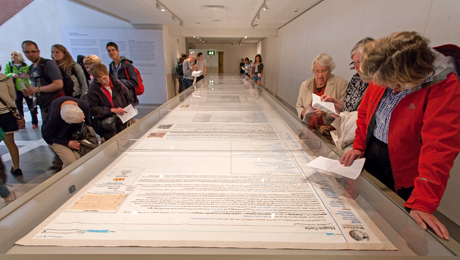 |
| A bright, high quality lens, a responsive high sensitivity sensor and great image processing produce a good low light performance |
If you’ve been to any surveillance trade show, or picked up an industry magazine in the past few years, you will have noticed that almost every camera manufacturer seems to be talking about low light. Some have specific, dedicated low light products with named technologies, while others claim low light capabilities across their whole product range. Either way, camera performance in low light is a focus for all manufacturers, including Canon.
The challenges with low light technology
In the days of analogue cameras, there was a clear and understood method for judging low light performance but in the move to IP, something appears to have got lost in translation. Now, two cameras may be specified to offer colour images at 0.5 lux at 50 IRE, but the images produced may be very different. As a result, there is confusion amongst installers and end users who are directly comparing camera performance on specification alone. At the same time, customers seem to be expecting a camera that can deliver exceptional low light performance and high resolution. It’s only when it comes to trying out their preferred solution in situ that they realise that it’s not possible to maximise these two capabilities in one camera.
Because of this confusion customers are losing trust in the market. But there is a simple fix. Installers and customers need to test products in their actual installation environment to find the best fit. Many manufacturers offer loan schemes where customers can test a camera before making a final decision to check that it is the best possible solution for them. We believe this is an absolute must.
Uses for low light cameras
One example of a low light installation is the British Library. Due to the building’s architecture, the museum needed an effective monitoring system that would work in a low light environment. By selecting the Canon VB-H610D, the security team is able to capture an image and zoom in up to four times whilst still maintaining image detail. The Smart Shade Control (SSC) function helps to optimise exposure, improving highlights and correcting dark areas in backlit scenes. It also converts hard-to-see silhouettes into clearly identifiable objects.
The Library’s Magna Carta exhibition in particular benefits from Canon’s low light performance. As one of the most famous documents in the world, it has to be kept in an environment with carefully controlled lighting due to its age and fragility. This is a common problem with older texts and artefacts, making low light capabilities essential in museum and library environments for protecting valuable assets.
 |
| Due to the carefully controlled lighting of the Magna Carta exhibition in the British Library, low light performance cameras were a must |
The technology behind great low light performance
Great low light performance comes from a combination of using a bright, high quality lens, a responsive high sensitivity sensor and great image processing. Nevertheless whilst many companies may promote their image processing it really is almost impossible to have good low light performance without first having a good lens.
A lens with a wide aperture lets more light into the camera and on to the sensor. Cameras also need to use high quality lenses that use ultra-low dispersion (UD) glass. UD marks a huge step forward in lens technology, as it reduces colour flaws, minimises blurring at the edge of images and compensates for any astigmatism in the lens.
The sensors used are also important. Each sensor is made up of individual pixels, and for the best response or sensitivity, as much light as possible is needed to hit each pixel. Clearly the bigger the pixel the better the low-light performance of the sensor and hence the camera. However, the physical size of the sensor needs to be considered in the design and cost of the product, so in general a sensor with bigger pixels is a sensor with lower resolution.
The future of low and difficult light imaging
High quality lenses and developments in UD technology are already pushing low light development forward, but there’s still room for improvement. Sensor sensitivities will increase which will take low light performance to new levels – and we will see the high-resolution products of tomorrow delivering the low light performance we see from lower resolution cameras today.
At Canon we’re also working on delivering low light performance which is more “useable”. In zoom lenses, low light performance changes as the lens zooms in on an object, moving from its wide-angle to its telephoto position.
Canon has recently announced that it is developing a high-sensitivity network camera equipped with a fast high-magnification lens, capable of long-range image capture in ultra-low light conditions. While on paper the specifications will remain very similar to other models, the performance will be 8x as bright at distance.
The most important thing for installers and customers to remember is always to test to find the best solution. Specifications alone will not define the best network camera when it comes to low light performance. Technology in this area will continue to progress in leaps and bounds and I’m excited to see how low light performance will develop across the industry.






















